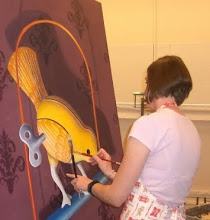 This is a portrait of Monifa, a pygmy hippo calf born at the Tarongo Zoo in Sydney on Oct. 15, 2008. Outside of zoo walls, little is known about the pygmy hippo because they are solitary, nocturnal, creatures found in the interior forests of West Africa. It is estimated that 2,000-3,000 individuals remain.
This is a portrait of Monifa, a pygmy hippo calf born at the Tarongo Zoo in Sydney on Oct. 15, 2008. Outside of zoo walls, little is known about the pygmy hippo because they are solitary, nocturnal, creatures found in the interior forests of West Africa. It is estimated that 2,000-3,000 individuals remain.My favorite new site, ARKive.org, has some great footage and information on the pygmy hippo.



